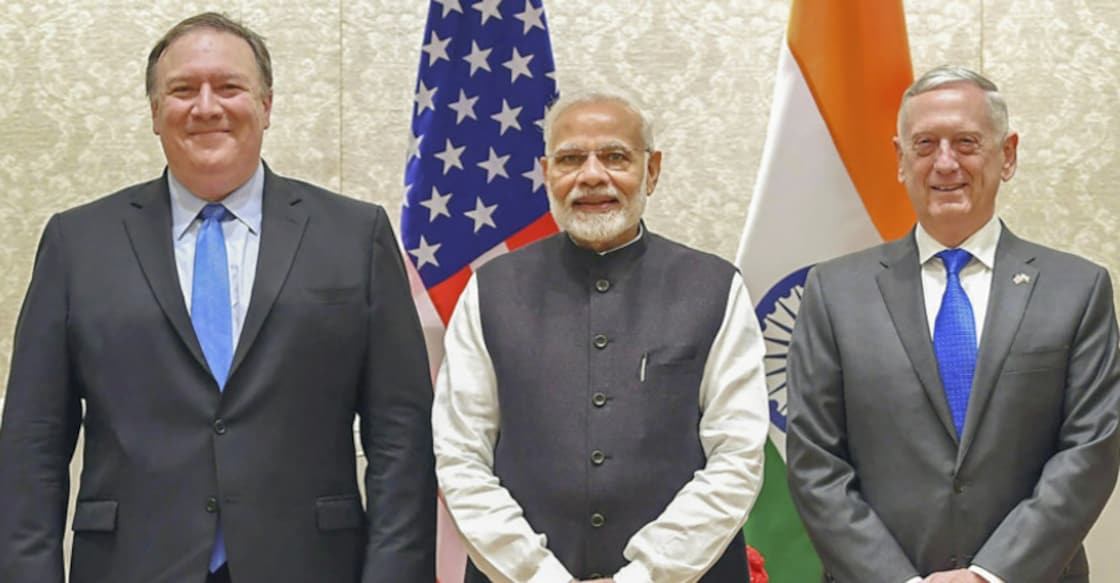Shangri La stance: India's move into calibrated diplomacy

Mail This Article
The recently concluded two-plus-two dialogue should be assessed against the tempered address delivered by Prime Minister Narendra Modi at the Shangri La dialogue in Singapore on June 1, 2018. It was a balanced speech which supported neither the US nor the Chinese perspective. The speech left the US wondering if India was serious about the interoperability (ability of two militaries to fight together) to counter growing Chinese influence in the Indo-Pacific. (Two-plus-two is the institutionalization of a diplomatic dialogue).
If the US secretaries Mike Pompeo and James Mattis still betrayed an urgency to achieve interoperability with the Indian Navy, they had a good reason for it. In his meeting with visiting Mattis, the Chinese president Xi Jinping had on 26 June 2018 said, “We will not lose one inch of territory passed down by our ancestors.” With hopes of compelling China to de-militarise South China Sea dashed, the US has doubled its efforts to safeguard the freedom of the Sea Lanes of Communications (SLOCS) across the two Oceans – Western Pacific and the Indian Ocean. Without India’s wholehearted participation in the US’ Indo-Pacific strategy as the maritime and naval pivot in the Indian Ocean Region, this would not be possible.
Modi’s Shangri La address showed he had learnt the lesson from the 2017 Doklam crisis with China - Interoperability with the US military in the Indo-Pacific would have implications for India on its disputed land border with China. India was not ready for the Doklam escalation, which is why Modi agreed to the April 2018 Wuhan understanding which committed India and China to cooperate (and not confront each other) for global good.
If India still remained enthusiastic about the progressive strategic and operational embrace of the US during the two-plus-two, the reasons were not difficult to find. India believes that being perceived close to the US would both help alleviate growing Chinese military pressure, and help India catapult to the elite club of nations with possibility of joining the Nuclear Suppliers Group and maybe the high table at the United Nations Security Council.
India therefore decided to sign the Communications Compatibility and Security Agreement (COMCASA). This would help the two sides communicate on secure NATO links, and facilitate the Indian Navy get a better Maritime Domain Awareness with its limited sea-going assets. On the flip side, given the US’ enormous cyber-attack capabilities, the worry should not be whether the US would share communications with Pakistan. But, what if the US inserted a virus to disrupt Indian communications. The US, to be sure, has its secure links other than those used with its NATO allies.
As of now, India is not close to achieving interoperability with the US, which has four steps. These are commonality of equipment; signing the four US foundation agreements (the most critical Basic Exchange and Cooperation Agreement or BECA which gives interoperability in navigation aids and data in command and control system is still not signed); discussing war doctrines, procedures and drills; and joint training with naval patrolling. India is likely to make further progress on interoperability conditional on US giving it desired dual-use technologies.

